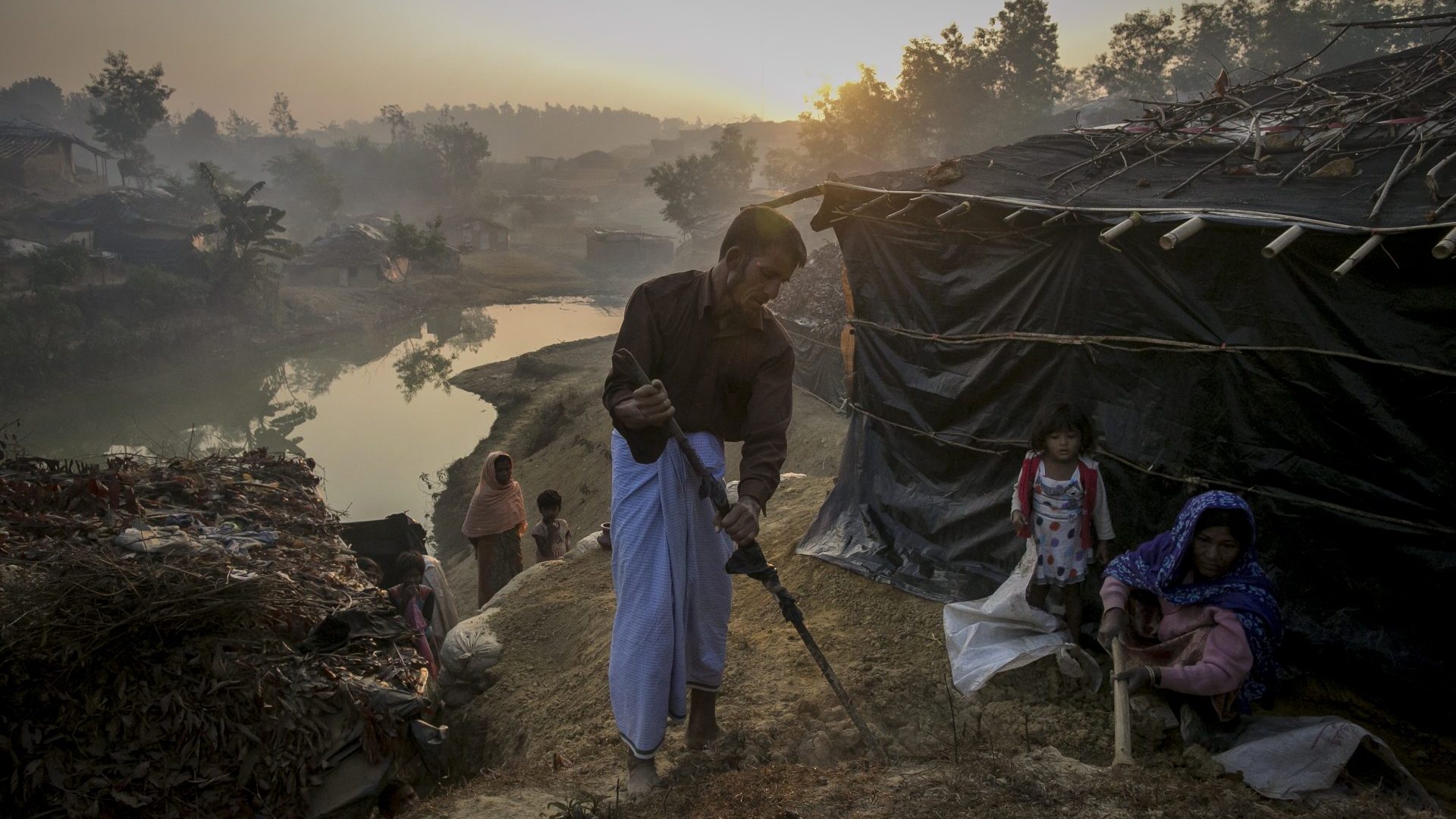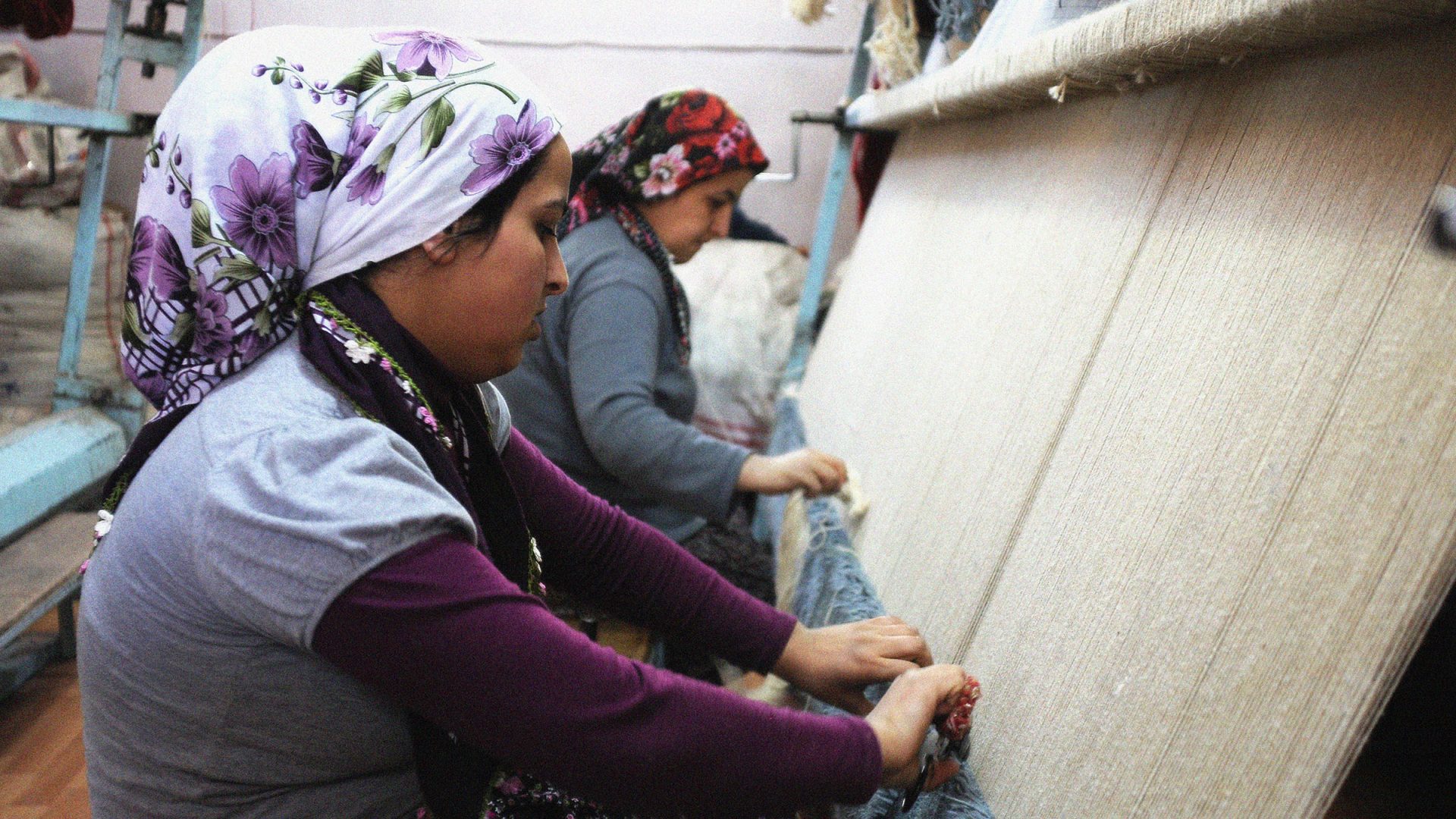In the Bangladeshi city of Cox’s Bazar in Bangladesh a quiet but devastating crisis is unfolding. This is the world’s largest refugee settlement, and it is full of Rohingya people, inhabitants of Myanmar who have fled their country to escape state-sponsored genocide. The camps are spread across dusty hills and open valleys. Thousands of bamboo and plastic-sheet shelters are packed closely together on dry, uneven ground. In some parts of the camp, small trees and patches of greenery provide shade and relief from the heat. In the rainy season, the hills turn green, but the ground is reduced to mud.
Smoke from cooking fires lingers in the air. It’s hot here. Children in faded clothes run barefoot through narrow paths, and families gather in small, cramped rooms, sharing a simple meal of rice. A solar-powered fan may spin slowly, but brings little relief.
The men wear old lungis, a piece of material tied about the waist like a skirt, and women wear once-colourful hijabs. Everywhere are the sounds of babies crying, water being poured into plastic drums, and the murmur of voices. People are queueing for food, carrying water, or selling snacks.
Since early June 2025, more than 300,000 Rohingya children have been left without access to education after Unicef and Save the Children were forced to shut down more than 6,400 schools due to a lack of funding. These children have already fled genocidal violence in Myanmar. School was one of the few sources of normalcy in their lives. That, too, is now gone.
In 2017, Hisbullah was born while his parents were fleeing violence in Myanmar and seeking refuge in Bangladesh. Now eight years old, he is a first-grade student at a school in the Rohingya refugee camp. “I want to become a teacher when I grow up,” he said. “But my school is now closed. I feel sad. I miss my friends and my teacher.”
Suggested Reading

Working with gold in India has lost its glister
His father, Mohammad Shakir, is deeply worried about his son’s future. “When the school was open, our children led a disciplined life,” he said. “Now that it’s closed, they have lost that structure. Without education, our community cannot move forward.”
There are other, more sinister dangers. In the first three months of 2025 alone, at least 51 Rohingya children were abducted from camps, for ransom or sometimes for recruitment by armed groups. An entire generation risks growing up illiterate and vulnerable to exploitation, child marriage, trafficking, and radicalisation. “If children are deprived of education now, they may be drawn into terrorism,” Shakir said.
Education is not a luxury in emergencies; it is a lifeline. It helps displaced children to process trauma, build resilience, and acquire critical life skills. In the Rohingya camps, where uncertainty about repatriation or permanent resettlement persists, education also preserves a glimmer of dignity, and dreams. Without it, we are failing the very children we claim to protect.
This is not a crisis of resources; it is a crisis of will. The money exists in the world, but the moral courage to prioritise the education of some of the most vulnerable children does not.
In 10 years, the world will look back at this moment and ask whether we chose silence and apathy or whether we stood with Rohingya children and protected their future. The clock is ticking, and every day without a classroom is a day of opportunity lost. The Rohingya children of Cox’s Bazar deserve better.
And the world has no excuse not to deliver.
Piyas Biswas is a multimedia journalist and documentary photographer based in Dhaka



